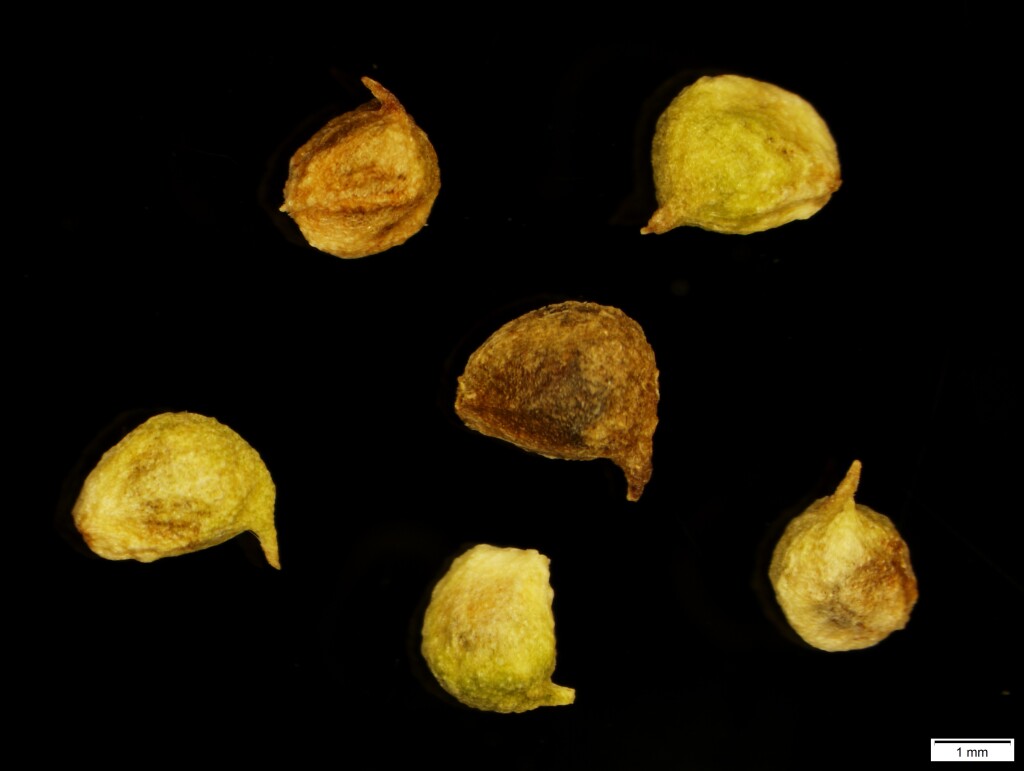Ranunculus papulentus
Melville Large River ButtercupRhizomatous or stoloniferous perennial to c. 25 cm high. Leaves mainly tufted at base; petioles 4–20 cm long; lamina palmatisect, c. deltoid to ovate, 2–5 cm long and wide, glabrous or sub-glabrous above, sparsely pilose beneath, segments 2–6 mm wide. Flowering stems erect, exceeding leaves, 1–4-flowered; sepals 5 or 6, spreading, oblong to ovate, c. 5 mm long, sparsely hairy on back (rarely glabrous); petals 5–9, narrowly obovate to elliptic, 7–10 mm long, 2–3 mm wide, yellow, glossy; nectary lobe largely fused to petal, ovate to oblong, c. 0.5 mm long overall; stamens c. 30–40. Achenes usually 35–50, plump, obliquely obovate, c. 3 mm long, smooth or slightly undulate on sides, broadly ridged dorsally; beak slender, c. 1.5 mm long, erect or recurved; receptacle sparsely hispid between achenes, glabrous or almost so in the staminal zone. Flowers Nov.–Feb.
Wim, GleP, VVP, MuF, GipP, WaP, Gold, CVU, GGr, EGL, EGU, HNF, MonT, VAlp. Also SA, NSW, ACT. Uncommon in Victoria and known with certainty from the Wulgulmerang-Benambra area, Braeside (a south-eastern Melbourne suburb) and near Natimuk. Occurs in seasonally wet areas, but ground usually dry or only moist at time of flowering. Many past distribution records are unreliable due to confusion with closely related species.
Very like R. glabrifolius (a species of more common) and able to be distinguished confidently only in the presence of mature achenes
Walsh, N.G. (1996). Ranunculaceae. In: Walsh, N.G.; Entwisle, T.J., Flora of Victoria Vol. 3, Dicotyledons Winteraceae to Myrtaceae, pp. 35–63. Inkata Press, Melbourne.
 Spinning
Spinning


